Have you ever found yourself at a crossroads, feeling uncertain about the choices that lie ahead? In a world where everything moves so fast, it’s easy to feel lost or overwhelmed. People turn to various practices for guidance, and one ancient tool that has stood the test of time is tarot. Not only does tarot offer deep insights into our lives, but it also opens the door to self-reflection and emotional healing. With the advent of technology, accessing tarot readings has never been easier or more innovative. Today, we explore the transformative power of tarot in our lives and how you can leverage it to gain clarity and peace. The Intersection of Tarot and Self-Discovery Tarot is not just about predicting the future; it’s about understanding the past and present to navigate the future with clarity. Each card represents different themes and lessons; they can mirror our experiences and emotions, allowing us to make sense of our current situation. In many ways, tarot acts as a mirror, reflecting our inner thoughts and feelings. This is especially important in a time characterized by uncertainty and constant change. As we seek guidance, the symbolism in tarot cards can reveal patterns in our lives and unlock hidden potentials. Benefits of Tarot for Emotional Wellness Utilizing tarot as a tool for self-reflection provides numerous benefits. Here are just a few: Enhanced Self-Awareness: Tarot encourages you to confront your feelings and patterns, helping you become more aware of your emotional state. Clarity in Decision-Making: By viewing situations through a different lens, tarot can offer clarity on difficult decisions, highlighting your instincts and desires. Empowerment: Engaging with tarot empowers you to take control of your narrative, reinforcing the idea that you hold the power to shape your destiny. Calming Effects: The practice of tarot can be meditative, providing a calming routine that helps reduce anxiety and promote emotional balance. In today’s digital age, you can even access free online AI tarot readings, offering convenient and insightful reflections without the need for physical cards. This innovation allows for a unique tarot experience where technology meets tradition, making tarot accessible to all, wherever and whenever needed. Starting Your Tarot Journey Embarking on a tarot journey can be exhilarating, yet it may feel daunting at first. Here are some tips to ease you into the practice: Trust Your Intuition: Remember that tarot readings are personal. Trust your gut feelings and interpretations of the cards. Set an Intention: Before starting a reading, think about what you want guidance on. Having a clear intention can enhance the quality of your insights. Reflect After the Reading: Take time to reflect on how the cards resonate with your current life situations. Journaling about your insights can be incredibly beneficial. Practice Regularly: Like any skill, the more you practice tarot, the more intuitive you will become. Make it a part of your routine! Invite Transformation into Your Life By integrating tarot into your self-care routine, you not only enhance your emotional well-being but also promote a deeper connection with yourself. Tarot serves as a gentle reminder that you’re not alone in your journey; the cards encourage you to explore your inner landscape and uncover the wisdom that lies within. Get a Free Reading References Psychology Today, The Benefits of Tarot for Emotional Health, 2022 Smith, J., Understanding Tarot: A Deep Dive into Self-Reflection, 2021 Jones, A., Tarot as a Tool for Personal Growth, 2020
Sem categoria
How to Read Tarot Cards for Beginners (With Tips You Won’t Find in the Guidebook)
Have you ever felt the urge to seek guidance or illumination during times of uncertainty? You’re not alone. In a world bustling with distractions, many of us yearn for a moment of clarity. Tarot cards can serve as a powerful tool for self-reflection, guidance, and spiritual insight, bridging the gap between our inner thoughts and the universe’s whispers. If you’re completely new to tarot, this guide will empower you to embark on your journey of discovery, helping you to not only read tarot cards but also to trust your intuition along the way. Understanding the Tarot Deck Structure Before diving into interpreting tarot cards, it’s essential to understand the basic structure of a tarot deck. A standard tarot deck consists of 78 cards divided into two primary sections: the Major Arcana and the Minor Arcana. Major Arcana The Major Arcana includes 22 cards that represent significant life events and profound spiritual lessons. These cards often capture the essence of archetypal experiences, such as The Fool, The Lovers, or The World. When a Major Arcana card appears in your reading, it indicates a major influence in your life. Minor Arcana The remaining 56 cards make up the Minor Arcana, divided into four suits: Cups, Pentacles, Swords, and Wands. Each suit symbolizes different aspects of life: Cups: Emotions, relationships, and connections. Pentacles: Material matters, work, and home. Swords: Intellect, conflict, and challenges. Wands: Creativity, action, and inspiration. Within the Minor Arcana, you’ll also find court cards (Page, Knight, Queen, and King), which often represent people or energies that embody the qualities of their respective suits. How to Start Reading—Even Without Intuition Many beginners feel hesitant about their intuition, often believing it must be a mystical gift to read tarot cards effectively. However, anyone can learn how to tarot cards with practice and patience. Here’s how to get started: 1. Formulate Your Question Begin each reading by forming a clear, open-ended question. Instead of asking, “Will I find love?” rephrase it to “What do I need to know about my love life at this moment?” This method invites deeper insight. 2. Shuffle with Intention As you shuffle the cards, focus on your question. Shuffling mindfully allows you to infuse your energy and intention into the deck. Remember, your emotional state can affect how you perceive the cards, so do your best to remain centered. 3. Pull Your Cards Whether you pull one card for simplicity or several for a more detailed spread, trust your instincts. You might feel drawn to a particular card—let this feeling guide you. Pull cards based on your intuition rather than strict rules. 4. Interpreting the Cards Start by looking at the traditional meanings of the cards in context with your question. However, go beyond the text in your guidebook. Consider: The colors present in the card, which can convey emotions or themes. Symbols and imagery and how they resonate with your current life situation. Your immediate emotional reaction to each card—a gut feeling can often provide you with unique insights. Connections between cards, such as how they might interact with one another. Overcoming Self-Doubt and Building Confidence Self-doubt can be a common barrier for beginners. Remember, tarot is not only about fortune-telling but also about self-exploration and understanding. Here are some tips to help you build confidence: Keep a Tarot Journal: Document your readings, interpretations, and reflections. Over time, you’ll see patterns and growth in your understanding. Practice Regularly: The more you connect with the cards, the more intuitive your readings will become. Use Positive Affirmations: Remind yourself that you are capable of interpreting the cards effectively. For those looking for a different approach, you can also explore free online AI tarot to get a sense of various interpretations and styles of readings. Final Thoughts Learning to read tarot cards isn’t just about understanding the deck; it’s a personal journey toward deeper self-awareness and clarity. By following the steps outlined above and trusting your intuition, you’ll find that tarot can become a meaningful companion on your life’s journey. Embrace the cards, explore their depths, and allow them to aid you in your spiritual exploration. Get a Free Reading References Smith, J. Tarot Basics: An Introduction to Reading Cards, 2021. Psychology Today. The Power of Intuition in Decision Making, 2022. Brown, T. The Emotional Language of Tarot, 2023.
How to Read Tarot Cards for Beginners (With Tips You Won’t Find in the Guidebook) Ler postagem »
A Ordem do Tarô Explicada: Arcanos Maiores, Naipes e Histórias
Have you ever felt the pull of the unknown, the whisper of a deeper understanding just out of reach? Tarot is not just a tool for divination; it is a map of our journey through life, guiding us through the labyrinth of our emotions, actions, and spiritual growth. Understanding the structure of a tarot deck can open doors to revelations about your personal evolution. Dive into this ancient system and discover how the cards mirror not only our individual experiences but also the universal human narrative. Understanding the Tarot Structure A standard tarot deck comprises 78 cards, divided into two primary segments: the Major Arcana and the Minor Arcana. The Major Arcana consists of 22 cards that represent significant life lessons and spiritual development. These cards encapsulate pivotal experiences and themes that shape our existence, from love and loss to joy and enlightenment. The Minor Arcana, on the other hand, consists of 56 cards divided into four suits: Cups, Pentacles, Swords, and Wands. Each suit corresponds to different aspects of life: Cups: Emotions, relationships, and connection Pentacles: Material aspects, finances, and the physical world Swords: Thoughts, challenges, and conflicts Wands: Creativity, action, and inspiration The Numerical Progression In each suit, the cards follow a numerical progression from Ace to Ten, illustrating a journey from inception to completion. The Ace signifies the raw potential of the suit, while the Ten represents culmination. Following these numbered cards are four Court Cards—Page, Knight, Queen, and King—each reflecting a different stage of growth or maturity within the suit’s theme. This tarot card sequence shows how each card builds upon the previous one, creating a narrative arc that enhances our understanding of the human experience. The Fool’s Journey The heart of the Major Arcana is known as The Fool’s Journey, a compelling narrative arc about personal and spiritual evolution. It begins with The Fool, representing innocence, spontaneity, and the potential for new beginnings. As the journey unfolds through the cards, themes of growth, challenge, and enlightenment emerge, culminating in The World, which symbolizes a sense of wholeness and completion. Each card on this journey not only holds its own meaning but also reveals its significance through its position within the narrative. By exploring this tarot structure, you’ll find that understanding the interconnected story told by these 22 cards enhances your ability to read them for yourself or others, providing deeper insights into life’s experiences. For those curious about the tarot’s wisdom who may not have access to a physical deck, you can explore free online AI tarot readings. This innovative approach can help you grasp the essence of the cards even when a traditional deck isn’t at hand. Why This Matters By studying the structure and storytelling of tarot, we empower ourselves to navigate our lives more consciously. The cards become a mirror reflecting our dreams, fears, and aspirations, making it easier to understand our paths and intentions. Embracing this knowledge can lead to increased self-awareness, emotional clarity, and personal growth, guiding us on our journeys through the complexities of life. Get a Free Reading References Smith, J. The Psychology of Tarot. 2021 Psychology Today. Understanding Archetypes in Tarot. 2020
A Ordem do Tarô Explicada: Arcanos Maiores, Naipes e Histórias Ler postagem »
Modelos de Diário de Tarô: Como Registrar Suas Leituras e Acompanhar Sua Intuição
Have you ever felt a deep connection while shuffling your tarot cards, only to find that the experience fades once the reading is over? Keeping a tarot journal template can profoundly deepen your intuition and enhance your practice in ways you might not expect. This simple yet powerful tool enables you to track your readings, reflect on your emotions, and cultivate a personal relationship with the cards. As the world around us becomes increasingly fast-paced, carving out time to dive into your tarot journey has never been more important. The Value of a Tarot Journal Maintaining a tarot journal is invaluable for several reasons. First and foremost, it helps you notice patterns over time. By logging readings and reflecting on which cards frequently appear, you can refine your interpretations based on your own experiences rather than solely relying on traditional meanings. This practice fosters personal growth and a deeper understanding of yourself. Moreover, journaling allows you to document your emotional reactions to each reading. Do certain cards evoke specific feelings? Do you react differently when a card is reversed? By exploring these questions, you can uncover insights about your emotional landscape, leading to greater self-awareness and intentional decision-making. Practical Template Ideas for Tarot Journaling You can choose between structured journaling with prompts or a free-form approach, depending on what resonates with you. Here are some practical template ideas: Daily Card Log: Record the card drawn for the day, along with a brief note on your intuitive impressions and the emotions it stirs within you. Full Spread Reflections: Document your entire reading, reflecting on each card’s position and meaning. This log serves as a comprehensive guide to your reading evolution. Intuitive Impressions vs. Traditional Meanings: Write down your instinctual interpretations alongside traditional meanings for comparison and learning. Emotional Reactions: After a reading, note your emotional responses. Did any cards surprise you? Did they resonate with current life situations? Symbols Noticed: Reflect on any symbols or imagery that stood out during the reading and how they relate to your personal experiences. Post-Reading Follow-Up: After a few days or weeks, revisit your readings to assess how they played out in your life. Did the outcomes align with your initial interpretations? Structured vs. Free-Form Approaches The beauty of tarot journaling is that there’s no one-size-fits-all approach. For those who prefer structure, utilizing printable templates can be highly beneficial. Create a journal section for each of the above ideas, and set aside specific moments to fill them in after each reading. Alternatively, you can adopt a more free-form approach through stream-of-consciousness writing or even sketching your interpretations. This can open the door to creativity and intuition in unexpected ways. For even more interactive experiences, some readers enjoy using free online AI tarot as a way to explore diverse card meanings and interpretations. Integrating this with your journaling practice can deepen your understanding of the cards. The Benefits of Tarot Journaling By dedicating time to tarot journaling, you not only enhance your connection to the cards but also create a space for self-reflection and emotional exploration. This practice supports your personal journey by promoting mindfulness, encouraging commitment to your spiritual path, and facilitating the development of your intuitive skills. The act of writing helps clarify your thoughts, allowing for insights that may otherwise go unnoticed. Over time, you’ll likely find that your tarot practice becomes more meaningful and aligned with your life’s journey. Get Started Today Ready to embark on your tarot journaling journey? Start by setting aside a dedicated time each day for your readings and reflections. Your personal relationship with the cards awaits, filled with insights, patterns, and emotional richness. Get a Free Reading References Smith, J. The Power of Tarot Journaling. 2021 Psychology Today. The Art of Reflection: Journaling for Emotional Growth. 2020
Modelos de Diário de Tarô: Como Registrar Suas Leituras e Acompanhar Sua Intuição Ler postagem »
Tarô e Numerologia: O que os Números nas Cartas Realmente Significam
Have you ever drawn a tarot card and felt an instant connection, yet struggled to understand the deeper meaning behind its numbers? Tarot and numerology intertwine beautifully to unlock profound insights and guidance for our lives. Each card not only tells a story through its imagery but is also imbued with symbolic meaning rooted in its numerical essence. By delving into the world of tarot number meanings, you can enhance your intuitive readings and discover layers of growth, challenge, and spiritual evolution. The Significance of Numbers in Tarot Every tarot card carries with it an inherent numerical significance, which provides structure and context across the four suits of the Minor Arcana. These numbers, ranging from 1 to 10 and beyond, reflect themes that resonate throughout our life’s journey, playing a crucial role in interpreting the cards. The patterns they reveal can serve as guiding lights, aiding us in recognizing the cycles of conflict and resolution as well as the transitions of personal growth. 1 – Beginnings and Potential The number one is a powerful symbol of new beginnings, ambition, and potential. In tarot, it often appears in the Ace cards. For instance, the Ace of Wands represents inspiration and creativity, signaling the start of a passionate endeavor. In the context of numerology, this energy encourages us to embrace our innate desire to create and manifest. 2 – Duality and Balance The number two is all about partnership, duality, and harmony. Cards like the Two of Cups emphasize connections and relationships, while the Two of Swords points to indecision and the need for balance. This number invites you to explore your relationships and recognize the power of collaboration versus conflict in your life. 3 – Growth and Expansion Three signifies creativity, growth, and the joining of forces. The Three of Pentacles illustrates teamwork and mastery, while the Three of Swords represents heartache and sorrow. Each three invites you to embrace your creative impulses and learn from challenges in your connectedness with others. 4 – Stability and Structure This number symbolizes stability, foundations, and order. The Four of Wands celebrates harmony and community, while the Four of Pentacles warns against rigid control. Understanding the dichotomy within this number encourages us to seek stability while remaining open to change. 5 – Conflict and Change Five heralds conflict, challenge, and transition. The Five of Cups presents heartbreak and regret, while the Five of Swords warns of betrayal and strife. Each five can empower you to confront difficulties and seek resolution, ultimately cultivating strength and adaptability. 6 – Harmony and Balance Six represents harmony, love, and healing. In the Six of Cups, it embodies nostalgia and innocence, while the Six of Swords indicates transition and moving forward. This number invites us to recalibrate our emotional balance amidst life’s myriad experiences. 7 – Reflection and Insight The number seven encourages introspection and spiritual growth. The Seven of Wands speaks to resilience, while the Seven of Pentacles emphasizes patience and reevaluation. This number is a call for deeper self-reflection, allowing us to glean wisdom from life’s trials. 8 – Power and Control Eight signifies strength, authority, and material success. The Eight of Swords represents feeling trapped, while the Eight of Cups speaks to leaving behind what no longer serves us. This duality enables us to recognize where we hold power and where we may need to release control. 9 – Culmination and Wisdom As the number of completion, nine resonates with fulfillment and inner wisdom. The Nine of Cups is a card of satisfaction and contentment, while the Nine of Swords reflects anxiety and nightmares. Exploring this number encourages us to celebrate endings and the insights they bring. 10 – Completion and Renewal The number ten signifies completion and the promise of new beginnings. The Ten of Pentacles showcases legacy and stability, while the Ten of Swords indicates painful endings and surrender. This number encourages us to reflect on cycles and prepare for rebirth after challenges. Master Numbers and Repeating Patterns Adding another layer of possibility, Master Numbers such as 11 and 22 in the Major Arcana – like in The Justice and The Fool – offer deeper insights. These numbers often indicate heightened spiritual awareness and potential. Additionally, noticing repeating numbers in a spread, like multiple threes, can signal significant themes or influences at play, urging you to pay attention to those specific energies. Integrating Tarot Numerology into Your Readings Understanding tarot numerology can transform your tarot practice and help you unlock deeper meanings in your readings. Whether you’re a seasoned reader or just starting out, exploring the numbers behind the cards enables you to discern patterns and themes in your life’s narrative. By interpreting cards through their numerical meanings, you can weave a richer tapestry of insights, aiding your journey toward emotional wellness and self-discovery. If you’re curious about how this works in practice, consider checking out free online AI tarot services that can provide personalized insights based on your card selections. Conclusion Embracing the power of numbers within tarot reveals an intricate web of meaning that enriches our spiritual journey. Unlocking each number’s essence enhances your intuitive readings and adds layers of clarity to multi-card spreads. Each spread invites you to explore your life’s cycles, discern challenges, and celebrate growth. Remember, the insights offered by these symbolic numbers can guide you toward empowerment and purpose. References Smith, J. “The Power of Numerology in Tarot,” 2021 Psychology Today, “Understanding Tarot and Symbolism,” 2022 Jones, L. “Numerology and Its Impact on Spiritual Practices,” 2020 Brown, T. “The Tarot Art of Interpretation,” 2023 Get a Free Reading
Tarô e Numerologia: O que os Números nas Cartas Realmente Significam Ler postagem »
As origens do tarô: de onde ele realmente veio?
Have you ever glanced at a tarot card and felt an inexplicable pull? Perhaps you’ve wondered about its history, its cosmic mysteries, or how it evolved into a spiritual tool that many turn to for self-discovery and insight. The origins of tarot are as layered and intricate as the images depicted on the cards themselves. Understanding the rich tapestry of tarot history not only deepens your appreciation but also ignites a sense of wonder as you navigate its mystical journey. The Emergence of Tarot in 15th-Century Europe Tarot, as we know it today, traces its roots back to the 15th century in Europe, where it first appeared as a playing card game known as “trionfi” or tarocchi. Initially, these cards were an elaborate form of entertainment enjoyed by the nobility, serving as a sophisticated pastime in courts across Italy. Far from being regarded as instruments of fortune-telling, they were a social activity, creating bonds between players during gatherings and events. The Evolution of Tarot into a Spiritual Tool As time progressed, the role of tarot transformed significantly. By the 18th century, tarot began to be associated with esoteric practices, mysticism, and the occult. Influential figures like Antoine Court de Gébelin and Eliphas Lévi were pivotal in framing tarot as a means of divination and spiritual insight. They introduced elaborate symbolic interpretations of the tarot cards, intertwining them with ancient wisdom, astrology, and Kabbalistic concepts. This shift initiated a new era in tarot history, steering it away from its origins as a mere card game and towards its destiny as a potent emblem of personal reflection. Debunking Myths Surrounding Tarot’s Origins Among the swirling narratives surrounding the tarot are several myths, particularly the claims connecting it to Ancient Egypt or the Romani people. These assertions often arise from a desire to uncover a mystique that enriches the tarot’s allure. However, historical evidence suggests that tarot’s actual beginnings lay firmly in European soil. While certain symbols might resonate with Egyptian lore, much of what is attributed to ancient traditions stems more from later adaptations than from concrete origins. Respectful acknowledgment of these historical nuances allows us to appreciate tarot in its true context—a complex blend of culture, art, and personal mythology. The Impact of the Rider-Waite-Smith Deck A significant milestone in tarot’s journey emerged in the early 20th century with the creation of the Rider-Waite-Smith deck. This deck revolutionized tarot by making it more accessible and visually compelling. The collaboration of artist Pamela Colman Smith and scholar Arthur Edward Waite brought forth imagery that illustrated deeper meanings without needing extensive prior knowledge. The Rider-Waite-Smith deck remains a staple for both novices and seasoned readers, embodying the blend of artistry and spirituality that resonates with so many seeking insight today. Embracing Tarot in Your Personal Journey Exploring the depths of tarot not only enhances our understanding of its historical context but invites us to delve into our own journeys of self-discovery. Whether you are drawn to tarot for its rich history or for its potential to unlock personal revelations, it nurtures a space for reflection and growth. Engaging with tarot can provide clarity and guidance, offering pathways to understanding our subconscious feelings and desires. For those who are curious, you might want to try free online AI tarot readings for a taste of tarot’s insights from the comfort of your home. The more you explore, the more you’ll uncover the timeless wisdom that tarot has to offer. Get a Free Reading References Smith, J. The History of Tarot: Origins and Evolution. 2021 Psychology Today. Understanding the Psychological Effects of Tarot. 2020 Lee, M. The Mystique of Tarot: Debunking Common Myths. 2019
As origens do tarô: de onde ele realmente veio? Ler postagem »
Tarô do Dia: O que a carta de hoje significa e como usá-la
In a world that can feel overwhelming, taking a moment to connect with your inner self can make all the difference. Pulling a daily tarot card serves as a powerful mindfulness practice, inviting you to align with your intuition and observe the energetic tone of the day. Whether you’re a beginner stepping into the mystical realm of tarot or a seasoned reader deepening your connection, this daily ritual can enrich your personal journey. The Importance of Daily Tarot Rituals Establishing a grounding habit, pulling a tarot card each day can transform your morning or evening into a sacred moment of reflection. In the morning, it can help you set intentions and clarify your day’s focus; in the evening, it allows for profound reflection on your experiences. This ritual cultivates self-awareness by encouraging you to pause, listen, and observe the messages the universe is whispering. How to Interpret Your Daily Tarot Card When you pull your tarot card today, take a moment to breathe deeply and center yourself. Pay close attention to the symbols, colors, suits, and your personal emotional responses. Each element offers valuable insights and can unveil different layers of meaning. For example, a card from the suit of Cups may touch on emotional aspects, while a card from the suit of Swords may highlight intellectual challenges. Applying the Card’s Message Once you’ve identified the essence of your daily tarot meaning, consider practical applications: Journaling: Write down how the card resonates with you today. What emotions does it evoke? How can you integrate its lessons into your daily life? Mantras: Create a simple phrase that encapsulates the card’s message, repeating it throughout the day to reinforce your focus. Mindful Action: Use the card as a prompt to take mindful actions aligned with its energy. If you pull the Strength card, for instance, take bold steps toward a personal challenge. Spiritual Focus: Reflect on how the card’s energy aligns with your spiritual growth. What does it reveal about your current journey? Understanding the Unique and Repeating Cards You may notice that some days bring different cards, while others highlight familiar ones. If your card of the day changes often, it signals fresh lessons or shifting energies trying to guide you. Embrace this dynamism as a part of your evolving journey. Conversely, if you continually pull the same card, it may point to persistent themes or messages your subconscious is trying to reinforce. Reflect on why this card appears repeatedly; it may encapsulate unresolved feelings or a lesson that requires deeper exploration. Recognizing these patterns can be profoundly enlightening. Your Daily Tarot Journey Awaits As you embark on this daily tarot journey, remember that each card holds the potential for growth, self-discovery, and clarity. By embracing the tarot of the day, you cultivate a deeper relationship with your inner wisdom and become more attuned to the surrounding energies. If you’re eager to dive deeper into your tarot practice, consider exploring a free online AI tarot. It can be a helpful tool for those moments when you wish to connect with the cards and embrace the magic of your journey. Get a Free Reading References Smith, John. The Power of Tarot: A Guide to Mindfulness and Self-Discovery, 2021. Psychology Today. Understanding Your Subconscious Patterns: The Role of Repetition in Tarot, 2021. Johnson, Emily. Tarot and Emotional Intelligence: Harnessing the Power of Daily Insights, 2020.
Tarô do Dia: O que a carta de hoje significa e como usá-la Ler postagem »
Leitura de Tarô com Uma Carta: Como uma Única Carta Pode Revelar Sua Verdade Mais Profunda
In our fast-paced world, it’s easy to feel overwhelmed by choices, opinions, and the noise of everyday life. Yet, amidst this chaos, the wisdom of one card tarot readings offers a powerful insight—one that can cut through the clutter and reveal profound truths about ourselves. A single card can illuminate our path, validate our emotions, or guide our intentions. In moments of uncertainty, a one card reading can serve as a beacon of clarity, making it a valuable practice for both newcomers and seasoned tarot enthusiasts. The Power of a One-Card Tarot Reading A one-card tarot reading encourages us to focus deeply on a specific question, intention, or area of our lives. By honing in on a single card, we can bypass the feelings of being overwhelmed by complex spreads or lengthy interpretations. Instead, we gain a clear message that resonates with our current state of being. This simplicity allows for a more intimate connection with the card’s symbolism and meaning, making it an ideal tool for daily self-reflection and alignment. Strengths of a One-Card Reading There are numerous strengths to embrace when exploring a one card tarot reading: Clarity: One card can convey a clear, direct message that cuts through confusion. Focus: A single card encourages you to concentrate on a specific situation or emotion, fostering a deeper understanding of your true self. Accessibility: Ideal for both beginners and experienced readers, one-card pulls are quick and easy to incorporate into daily life. Daily Touchpoint: A one-card reading can act as a grounding touchstone, offering daily insight and reflection. Interpreting Your One-Card Pull While many people may default to keywords when interpreting a card, the true beauty of tarot lies in its rich symbols, tone, and suit. Each card carries layers of meaning that invite interpretation beyond the surface. For example: The High Priestess: When this card appears, it may call for stillness and trust in your intuition. It emphasizes the need to pause, listen, and reflect, allowing the whispers of your inner voice to guide you. Ace of Pentacles: This card often signals new tangible opportunities on the horizon. It may indicate a fresh start in your financial life or a new venture, inviting you to embrace abundance and prosperity. Three of Cups: A celebration of connection and joy, this card highlights the importance of community and support. It suggests that now is the perfect time to engage with friends and family, fostering unity and shared happiness. The Hermit: When drawn, The Hermit may signal a time of introspection and solitude, emphasizing the value of finding your own light in dark times. By looking closely at the symbols and overall tone of each card, you can deepen your interpretation and gain a comprehensive understanding of what the card might be conveying in relation to your question. Try It Yourself: One-Card Prompts Now that you understand the significant benefits of a one-card reading, here are a few prompts you can try on your own: What do I need to focus on today? How can I nurture my emotional well-being this week? What is a hidden opportunity waiting for me? How can I better trust my intuition? For those looking for instant insights, consider exploring free online AI tarot options that allow you to engage with these powerful messages at any time. Embracing the Journey Ultimately, a one-card tarot reading is more than just a simple pull; it’s an invitation to explore your inner world with greater depth and compassion. Each time you draw a card, you embark on a journey of self-discovery that reveals deeper truths and clarifies your intentions. By taking the time to connect with the card’s meaning, you foster an ongoing relationship with your own insights and emotions, which can greatly enhance your personal journey. Get a Free Reading References Smith, J. The Art of Tarot. 2021. Psychology Today. Understanding Intuition. 2022.
Outono Astronômico: Um Portal Espiritual para Reflexão, Tarô e Realinhamento Interior
As the Earth tilts and the Sun crosses the celestial equator, we arrive at astronomical autumn, a moment of cosmic balance. Marking the Autumn Equinox in the Northern Hemisphere, this turning point is more than just a seasonal change; it’s a spiritual invitation to pause, reflect, and realign. What Is Astronomical Autumn? Unlike meteorological autumn, which is based on the calendar months, astronomical autumn begins with the equinox, typically on September 22 or 23, when day and night are nearly equal in length. It’s a moment of perfect equilibrium between light and dark, marking the shift from outward activity to inner contemplation. This cosmic balance has been honored across cultures for centuries. From ancient harvest festivals to modern mindfulness rituals, the equinox reminds us that life, too, is a dance between extremes: rest and action, growth and release, light and shadow. A Time for Spiritual Reset Astronomical autumn is nature’s gentle nudge inward. As leaves begin to fall, we’re invited to shed old layers and prepare for a quieter, more introspective season. Spiritually, this is a powerful time to: Many find that this seasonal shift brings clarity, especially in relationships, career choices, and personal growth. A Simple Tarot Spread for the Autumn Equinox To align with the energies of astronomical autumn, try this gentle 3-card tarot spread. Find a quiet space, take a few deep breaths, and focus on your current state of mind as you shuffle the cards. 1. What am I releasing this season?Reflect on patterns, thoughts, or attachments you’re ready to let go of. 2. Where can I find balance in my life?This card reveals the area of life calling for harmony or recalibration. 3. What is emerging as I move forward?A glimpse into the new energy or mindset rising within you. Journaling after your reading can deepen the insights. You may also wish to revisit your cards at the Winter Solstice to see how your journey has unfolded. Create Your Own Equinox Ritual Here are a few ways to enhance your reading and ground yourself in the energy of the season: Astronomical autumn isn’t just about cooler air and golden leaves, it’s a powerful portal to tune in, reflect, and move forward with intention. Whether through tarot, ritual, or quiet observation, this is your chance to find stillness in the shift and beauty in the balance.
Outono Astronômico: Um Portal Espiritual para Reflexão, Tarô e Realinhamento Interior Ler postagem »
Sua tiragem de tarô de aniversário: uma leitura poderosa para o próximo ano
As the sun circles back to its starting point in the sky, your birthday brings not just celebrations but also a unique opportunity for self-reflection and spiritual alignment. It’s a day that marks the completion of another chapter in your life—a moment to assess, release, and embrace. What better way to honor this profound transition than through a special birthday tarot spread? This ritual can serve as a guiding light, illuminating your path for the year ahead. By diving deep into the energies that surround your personal journey, you can unlock insights that promote growth, reveal hidden blessings, and prepare you for the challenges that may arise. Understanding Your Birthday Tarot Spread A tarot birthday reading is a powerful tool designed to help you navigate the next 12 months. This six-card spread can serve as a mirror reflecting your past, present, and future, offering guidance on what to leave behind, embrace, and strive for in the year that awaits you. Below, we’ll lay out the card positions and their meanings, allowing you to create a sacred space for your reading. The Six Card Spread Layout What I’m Leaving Behind: Reflect on the energies, behaviors, or situations that no longer serve you. This card represents what you need to release to make room for growth. The Theme of the Year Ahead: A powerful indicator of the overarching lessons or experiences that will shape your next 12 months. Lesson to Embrace: This card reveals an important teaching or insight that you are meant to learn during the coming year. Hidden Gift: Sometimes, the universe offers us gifts disguised as challenges. This card highlights a hidden blessing you may discover. Support I Can Rely On: Guidance on the resources, people, or energies that will be available to assist you throughout the year. Key Challenge: A heads-up on significant obstacles you might encounter, preparing you to face them with courage and resilience. Where I’ll Shine: This card signals the areas where you will find joy, success, and fulfillment in the upcoming year. Preparing for Your Birthday Tarot Reading Creating a meaningful ritual space is essential for an impactful tarot reading. Here are some tips to help you prepare: Journaling: Before the reading, spend some time journaling your thoughts and feelings about the past year. Reflect on your journeys, challenges, and triumphs. Create a Ritual Space: Set the stage for your reading. Incorporate elements that resonate with you, such as candles, crystals, or incense, to evoke a calming atmosphere. Set Your Intentions: As you shuffle the cards, think about what you hope to gain from this reading. Setting clear intentions will help focus your energy and the reading’s outcomes. Reflecting on Your Reading Throughout the Year Once your reading is complete, it’s important to regularly revisit your spread. Here’s how: Keep a Tarot Journal: Document your insights, feelings, and experiences related to each card position throughout the year. Visual Reminders: Consider drawing or creating a visual representation of your spread to keep it present in your daily life. This can be a powerful reminder of your commitments and intentions. Monthly Check-ins: Allocate time each month to reflect on the guidance each card has provided and how it’s manifested in your life. This will help you stay aligned with your higher self. Your birthday is a powerful juncture, an opportunity to align with the energies of growth and renewal. A birthday tarot reading not only illuminates the path ahead but also connects you to your inner wisdom and intuition. Whether you’re new to tarot or have journeyed with it for years, I encourage you to embrace this personal ritual; it can profoundly enrich your year. For those curious to explore more about tarot, consider engaging with a free online AI tarot reading to supplement your traditional spreads. Get a Free Reading References Smith, J. The Magic of Tarot: A Personal Guide to Understanding and Reading Tarot, 2021. Psychology Today. The Importance of Self-Reflection: How It Can Enhance Personal Growth, 2022.
Sua tiragem de tarô de aniversário: uma leitura poderosa para o próximo ano Ler postagem »


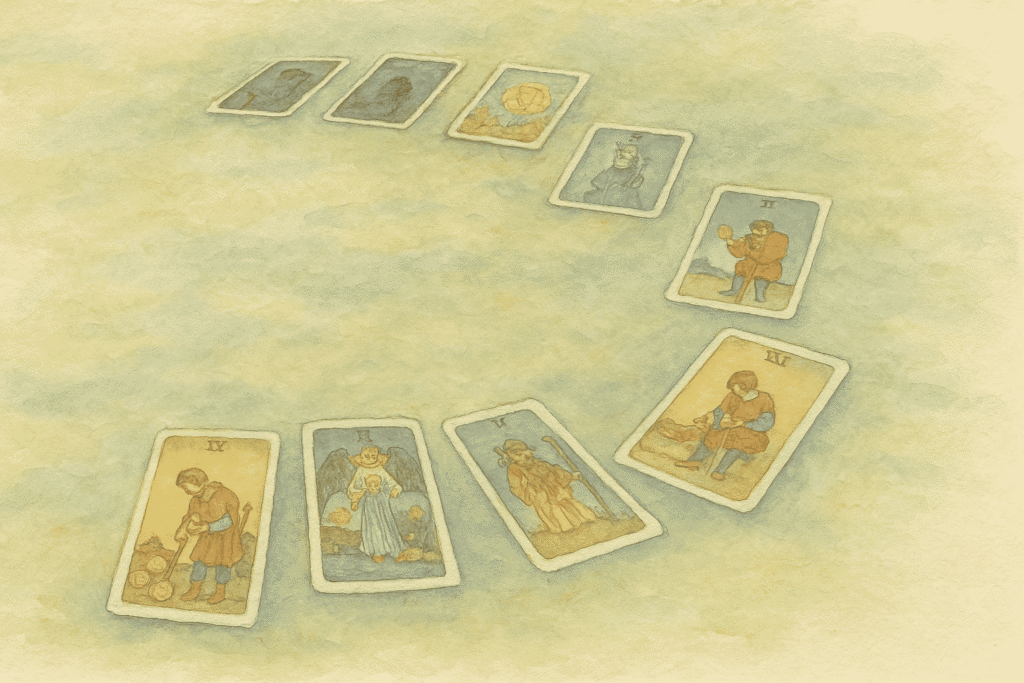
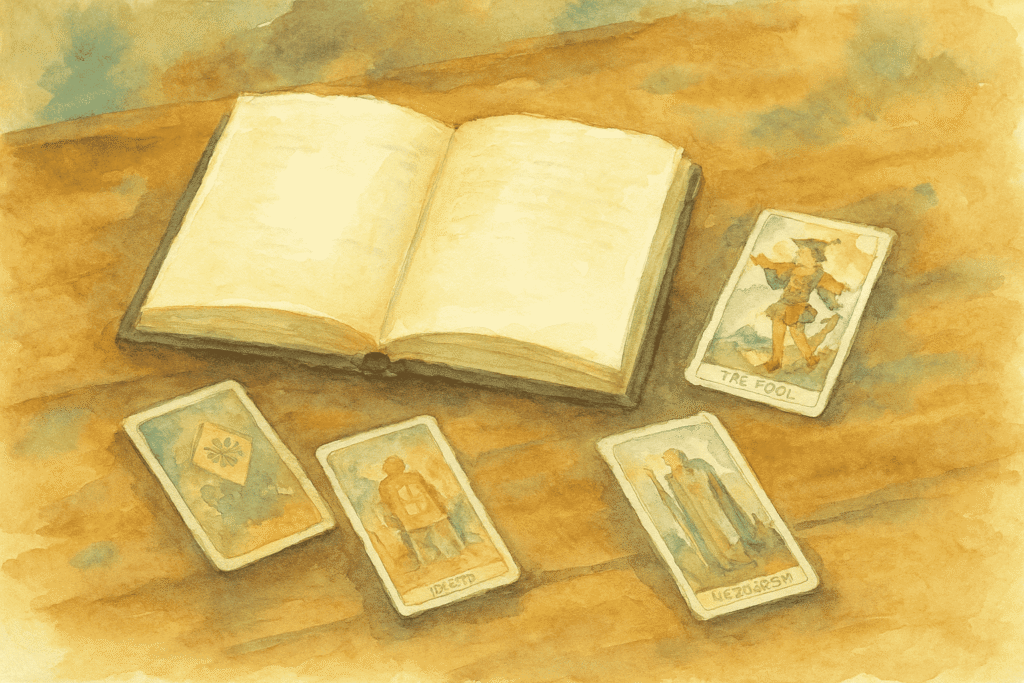


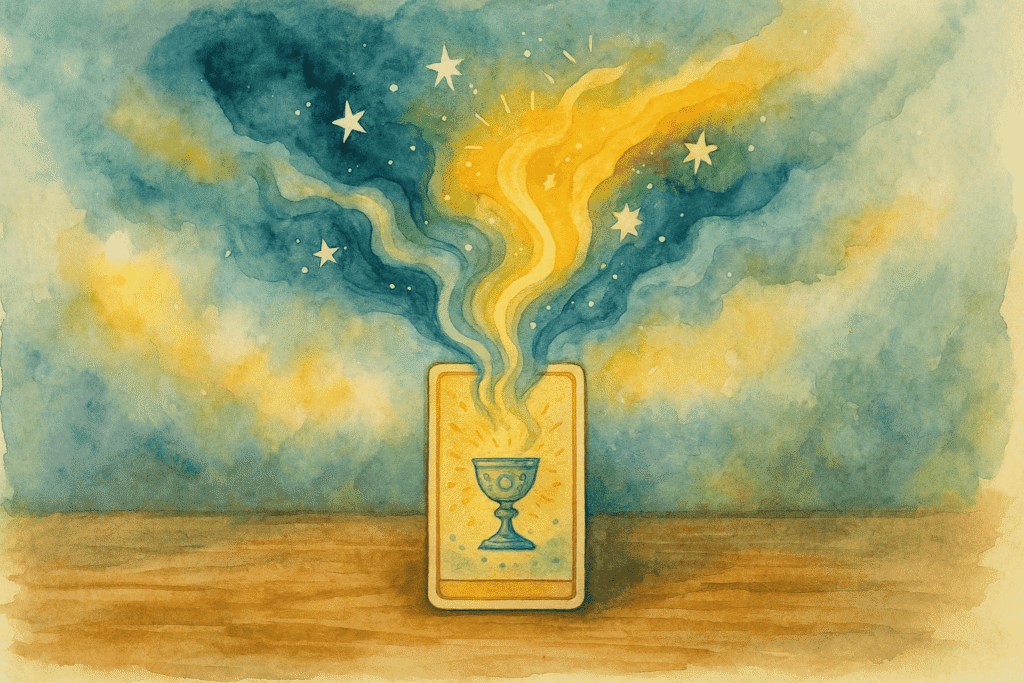
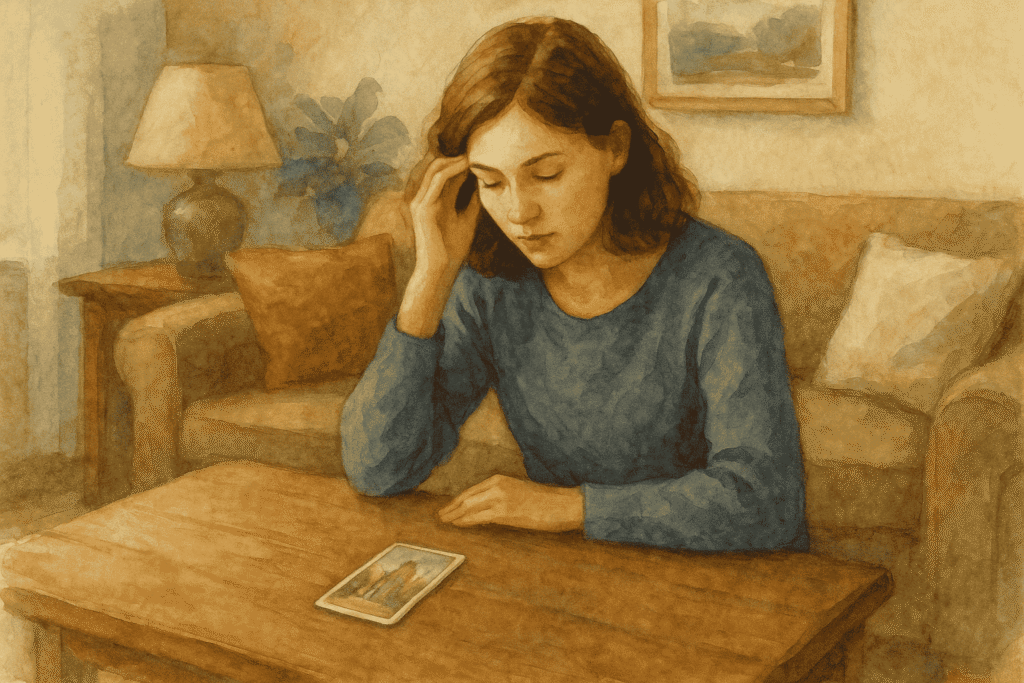
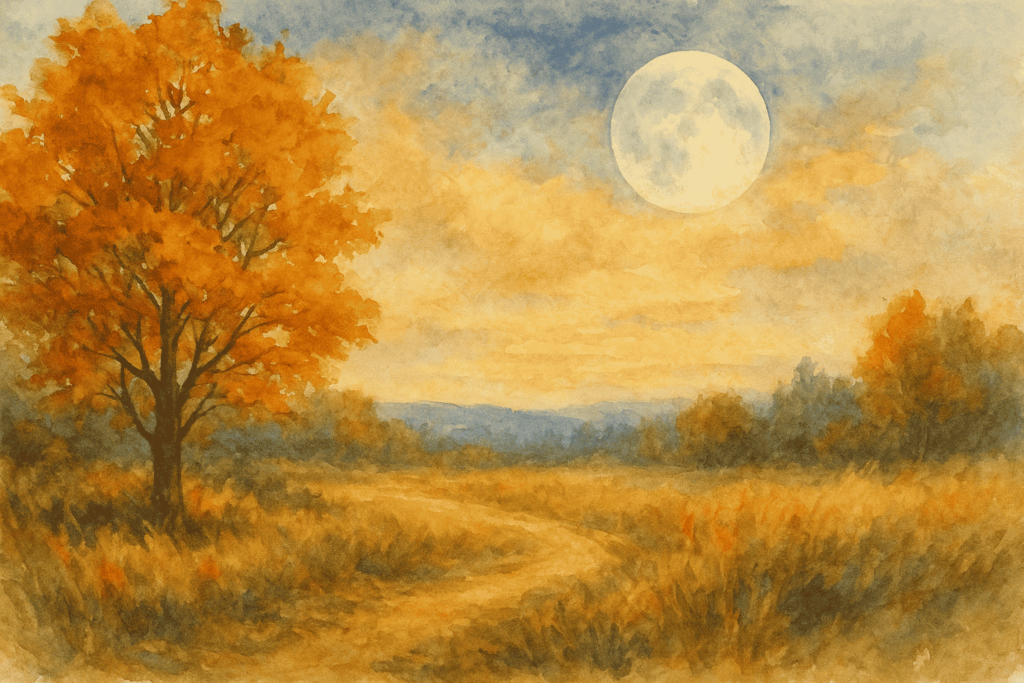

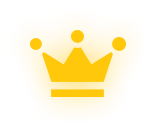
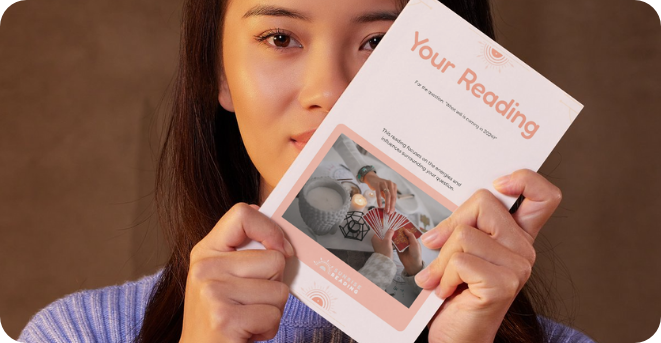
 Your Tarot Reading Awaits
Your Tarot Reading Awaits 